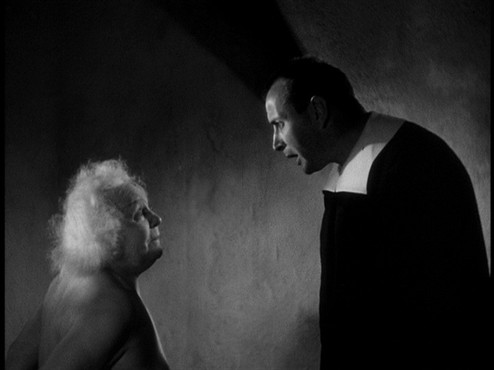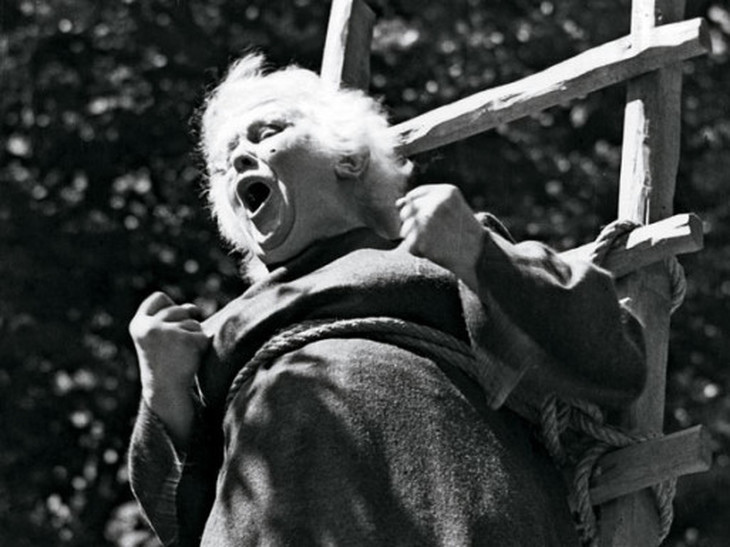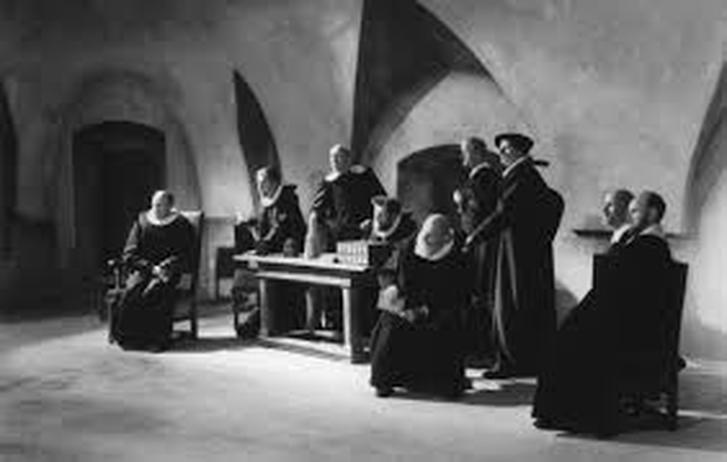 Set in 1600s Denmark, Carl Theodore Dreyer's Day of Wrath is a bleak, brooding tale of adultery, deception, and religious oppression which uses seventeenth-century witch hunts as the backdrop to deliver a powerful psychological thriller. The story itself is centered around Anne Pedersdotter, the significantly younger wife of a Danish pastor, who has grown tired of her husband's devout ways that see him never indulge in the finer things in life. Loathing his asceticism, Anne begins to fall in love with her husband's son, Martin, as the two spend an inordinate amount of time together. Featuring beautiful use of cinematography and mise-en-scene, Carl Theodore Dreyer's Day of Wrath is a film that captures the extreme amount of loss and death that exists in a system built around guilt and repentance. Many of these characters are weak souls, terrified of their own mistakes and flaws, and through this brooding psychological study Dreyer manages to captures how religion often becomes a device for hate, capturing how the paralyzing fear of stepping out of line creates a sense of oppression, which more so than not ends in either physical or psychological tragedy. For me, Day of Wrath captures the oppressive nature of religion in such a clean and fascinating way, using the character of Anne, a beautiful woman, who herself becomes convinced she may in fact be a witch by the end. Anne is a character who begins to truly believe that she is in fact a witch who has put a "spell" on both the Danish Pastor and his son due to her beauty, effectively destroying her own identity under the weight of such bigoted oppression. From a more technical perspective, the use of juxtaposition in Day of Wrath stood out, in particular the scene where Carl Dreyer juxtaposes Anne & Martin's young romance with the Danish Pastor's sorrow. While the two young lovebirds share a beautiful frolic in the sun-drenched fields, the Danish Pastor sits in absolute darkness, haunted by the death of Anne's mother at the stake, something which he feels much guilt about. The contrast of love with misery is phenomenal but what makes the whole sequence stand out in the end is how Day of Wrath slowly and methodically finds all these characters end in a similar state of darkness and misery. Featuring a brooding atmosphere and great use of juxtaposition and mise-en-scene, Carl Dreyer's Day of Wrath is a haunting psychological study about the oppressive nature of religion, revealing the power of guilt among those weak-minded individuals who rely on others to define what is truly fair and just.
0 Comments
Leave a Reply. |
AuthorLove of all things cinema brought me here. Archives
June 2023
|



 RSS Feed
RSS Feed
